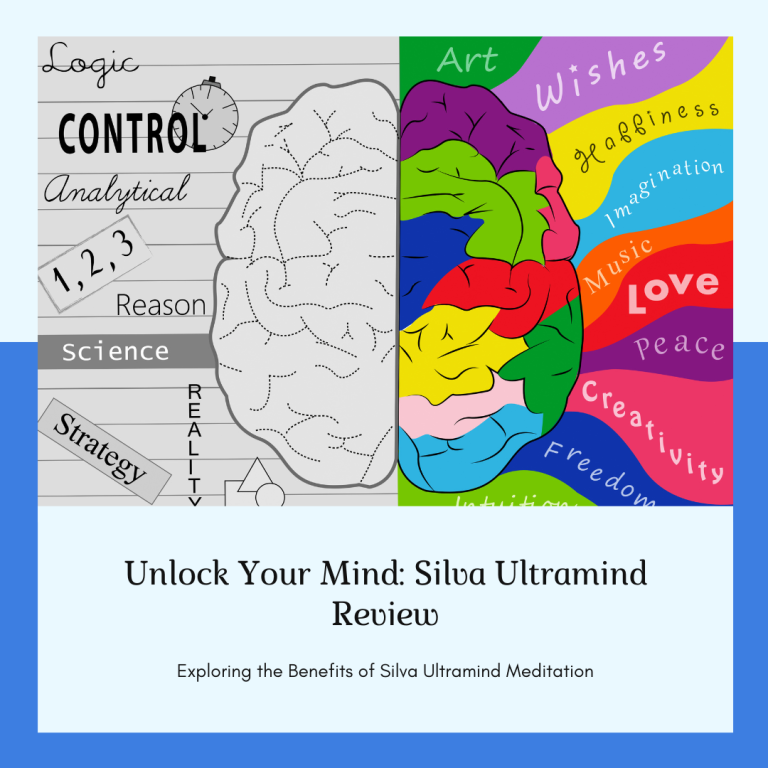5 Easy Steps on How to Meditate in Bed: Elevate Your Morning and Nighttime Routine
Ever found yourself waking up groggy, or tossing and turning at night, unable to find that sweet spot of rest? Today were going to learn how to meditate in bed. Integrating meditation into your morning or nighttime routine might just be the game-changer you’ve been seeking. Imagine starting your day with clarity and calmness or drifting into sleep with ease. Dive into this guide to discover the transformative power of meditating in bed.
What is Meditating in Bed?

Meditating in bed isn’t just a nighttime affair. It’s a focused breathing practice that can set the tone for your day or provide a peaceful transition into dreamland. Think of it as a mental tune-up, preparing you for the day ahead or ensuring restful slumbers.
Reasons to Incorporate Meditation into Your Morning and Nighttime Routines
Meditation, often seen as a solitary act of mindfulness, has profound effects when integrated into daily routines, especially during the transitional periods of morning and night. Here’s a deep dive into why you should consider making a meditation practice a cornerstone of your daily rituals:
1. Setting the Tone for the Day
Morning Meditation Benefits:
Mental Clarity: Starting your day with meditation can help clear mental fog, ensuring you approach tasks with a sharp, focused mind.
Emotional Balance: Morning meditation can act as an emotional thermostat, helping you maintain equilibrium, even when faced with challenges.
Boosted Energy: Contrary to the misconception that meditation is all about relaxation, a morning session can invigorate you, acting as a caffeine-free energy booster.
Enhanced Creativity: By tapping into a state of calm, you can access deeper wells of creativity, making problem-solving and innovative thinking more accessible throughout the day.
2. Processing the Day’s Events
Nighttime Meditation Benefits:
Reflection and Release: The day can bring a mix of emotions and experiences. Nighttime meditation offers a space to process these, allowing you to let go of any negativity or stress.
Preparation for Rest: By calming the mind, you signal to your body that it’s time to transition into a restful state, making it easier to fall asleep.
Deepened Sleep Quality: Regular meditation can enhance the depth and quality of sleep, ensuring you wake up refreshed. It’s like giving your mind a mini-vacation every night!
Subconscious Problem Solving: Ever heard the phrase “sleep on it”? Meditating before bed can allow your subconscious to work on problems, leading to “eureka” moments upon waking.
3. Cultivating Consistent Mindfulness
Both morning and nighttime meditations contribute to a consistent, mindfulness meditation practice. Here’s why that’s golden:
Stress Reduction: Regular meditation, regardless of when you practice, has been shown to reduce cortisol levels, the body’s primary stress hormone.
Improved Emotional Health: Consistency in meditation can lead to a more positive outlook on life, reducing symptoms of anxiety and depression.
Enhanced Self-Awareness: By checking in with yourself twice daily, you become more attuned to your emotional and mental states, fostering self-growth.
Better Decision Making: A clear, calm mind is a decisive one. Regular meditation sharpens your decision-making skills, making daily choices more aligned with your goals and values.
Incorporating a meditation routine into both ends of your day acts as a powerful bookend, ensuring you start strong and conclude with serenity. Whether you’re gearing up for a busy day or winding down from one, meditation offers tools to enhance your well-being, productivity, and overall quality of life.
Step-by-Step Instructions On how to Meditate in Bed

Meditating in bed can be a transformative experience, whether you’re kickstarting your day or winding down for a better sleep for the night. Let’s delve deep into the practical steps for both scenarios:
Morning Meditation in Bed

1. Setting the Scene
Position: Sit up slowly, placing your feet flat on the ground. Rest your hands on your lap.
Environment: Allow the natural morning light to fill the room. If it’s still dark, consider a soft lamp or candlelight. Ensure the room is at a comfortable temperature.
2. The Awakening Breath
Start with three deep breaths. Inhale through the nose, feeling the cool morning air, and exhale through the mouth, releasing any residual drowsiness.
Visualize the breath energizing every cell, preparing you for the day.
3. Body Activation
Begin at the top of your head, slowly moving your awareness down to your toes.
As you do this, gently wiggle or stretch each body part, awakening it. This can include neck rolls, shoulder shrugs, and ankle rotations.
4. Day’s Intentions Visualization
Close your eyes and visualize your day unfolding. See yourself accomplishing tasks with ease, interacting positively with others, and feeling fulfilled.
Set one or two clear intentions for the day. It could be as simple as staying present during meetings or showing kindness to a colleague.
5. Gratitude Infusion
Think of three things you’re grateful for. It could be the comfort of your bed, the promise of a new day, or a loved one’s smile.
Let the feeling of gratitude wash over you, energizing and uplifting your spirit.
Nighttime Meditation in Bed

1. Setting the Scene
Position: Lie down comfortably, ensuring your spine is aligned and your head is well-supported.
Environment: Dim the lights or turn them off completely. Consider using soft, ambient music or white noise to drown out any distractions.
2. The Calming Countdown
Starting from 100, count backwards with each exhale. With every number, feel yourself sinking deeper into the mattress, letting go of the day’s stresses.
3. Body’s Lullaby
Begin at your toes, slowly moving your awareness up to the crown of your head.
As you focus on each body part, imagine it becoming heavy and relaxed. Envision any tension melting away, absorbed by the bed.
4. Night’s Reflection
Without judgment, allow your mind to briefly revisit the day’s events. Acknowledge any accomplishments, learnings, or moments of joy.
If any negative thoughts arise, visualize them as clouds drifting away, making space for restful sleep.
5. Deep Dive into Dreamland
Visualize a serene place, like a tranquil beach or a lush forest. Imagine yourself there, feeling completely at peace.
Allow this visualization to guide you into a deep, rejuvenating sleep.
Key Considerations For Successfully Meditating in Bed
Meditating in bed might seem straightforward, but to reap the full benefits quality sleep, and ensure a successful practice, there are several factors to consider. Let’s delve into the nuances and key considerations that can make or break your in-bed meditation experience:
1. The Right Environment
Ambiance: The ambiance of your room plays a crucial role. Consider soft lighting, perhaps from a dimmable lamp or candles, to create a serene environment. The goal is to have lighting that signals to your body that it’s time to relax without straining your eyes.
Noise Levels: While some people can meditate amidst city sounds, others might need complete silence or soft background music. Consider earplugs, white noise machines, or meditation tracks to create your ideal soundscape.
Comfort: Ensure your beddings are comfortable. This includes your mattress, pillows, and blankets. The last thing you want is to be fidgeting during meditation because of a lumpy pillow.
2. Physical Positioning
Posture: Whether you’re sitting up or lying down, maintaining a good posture is essential. Ensure your spine is aligned. If sitting, consider using cushions or pillows for support.
Hand Placement: There’s no strict rule here, but common positions include hands on the lap or by your side. Find what feels natural and comfortable for you.
Leg Position: If sitting, you can opt for a simple cross-legged position or even extend your legs out. If lying down, ensure your legs are relaxed and not crossed.
3. Mental Preparedness
Setting an Intention: Before you begin, ask yourself why you’re meditating. Is it to relax, to gain clarity, or perhaps to drift into sleep? Setting an intention can guide your meditation and make it more purposeful.
Managing Expectations: Understand that not every session will feel the same. Some days you’ll achieve deep relaxation, while others might be filled with wandering thoughts. That’s okay. The key is consistency and non-judgment.
4. Duration and Consistency
Start Small: If you’re new to meditation, start with short sessions, maybe 5-10 minutes, and gradually increase as you become more comfortable.
Consistency Over Intensity: It’s better to meditate for shorter durations regularly than to do hour-long sessions sporadically. Aim for consistency, even if it’s just a few minutes daily.
5. Dealing with Distractions
Wandering Mind: It’s natural for the mind to wander. When it does, gently bring your focus back to your breath or the meditation technique you’re practicing.
Physical Sensations: You might feel an itch or slight discomfort. Acknowledge it, and decide whether it’s something that needs immediate attention or if it can wait until after your session.
External Distractions: This could be a sudden noise, a phone notification, or someone entering the room. If possible, address potential distractions beforehand by informing family members or setting your phone to “Do Not Disturb.”
Incorporating these considerations can significantly enhance your meditation experience in bed. Remember, the goal is relaxation and mindfulness. With the right environment, posture comfortable position, and mindset, you’re well on your way to successful meditation sessions, morning or night.
Taking it to the Next Level: Advanced Bedtime Meditation Techniques

As you become more accustomed to meditating in bed, you might feel the urge to delve deeper and explore advanced and practice meditation techniques. These methods can offer profound experiences, helping you achieve even greater levels of relaxation, insight, and self-awareness. Let’s dive into some advanced bedtime meditation techniques that can elevate your practice:
1. Guided Imagery and Visualization
Journeying to Serene Places: Close your eyes and imagine a tranquil setting, like a secluded beach at sunset or a serene mountaintop. Feel the sensations associated with that place—the warmth of the sun, the sound of waves, or the cool mountain breeze.
Meeting Your Inner Guide: Visualize a wise figure or entity that offers guidance and insights. Engage in a dialogue, asking questions or seeking clarity on life’s challenges.
2. Mantra Meditation
Choosing a Mantra: This could be a word, phrase, or sound that resonates with you. Common mantras include “Om” or “Peace.”
Repetition and Focus: Silently repeat your chosen mantra, allowing it to anchor your mind. If distractions arise, gently return to the mantra.
3. Deep Dive into Chakra Meditation

Understanding the Chakras: Familiarize yourself with the seven primary chakras or energy centers in the body, each associated with specific qualities and areas of life.
Balancing and Aligning: Focus on each chakra, visualizing its color and feeling its energy. Imagine it spinning harmoniously, clearing any blockages and aligning with the other chakras.
4. Yoga Nidra
Guided Relaxation: Often referred to as “yogic sleep,” Yoga Nidra is a state of deep relaxation while maintaining consciousness. It involves a guided journey through the body, cultivating profound relaxation.
Sankalpa: Set a positive intention or resolve at the beginning of the practice, allowing it to embed deeply into your subconscious during the session.
5. Binaural Beats Meditation
Understanding Binaural Beats: These are audio tracks where two slightly different frequencies are played in each ear, leading the brain to perceive a third tone that’s the mathematical difference between the two.
Brainwave Entrainment: By listening to specific binaural beats, you can induce states of relaxation, deep meditation, or even REM sleep. Ensure you use headphones for this technique.
6. Loving-Kindness Meditation (Metta)
Cultivating Compassion: Begin by sending love and positive wishes to yourself. Gradually extend these feelings to loved ones, acquaintances, and even people with whom you have conflicts.
Expanding the Circle: The goal is to extend feelings of compassion and love outward, eventually encompassing all beings everywhere, without exception.
Exploring these advanced techniques can offer deeper insights, profound relaxation, and a stronger connection to your inner self. As always, approach each method with an open mind and heart, finding what resonates most with you. Remember, meditation is a journey, and these techniques are tools to enrich your path.
Alternatives to Meditating in Bed

If meditation isn’t your jam, no worries. Here are some alternatives:
– Progressive muscle relaxation: Great for morning stretches or nighttime relaxation.
– ASMR: A sensory treat, anytime.
– Yoga: Sun salutations in the morning or gentle stretches at night.
—
Wrapping Up: The Power of Meditating in Bed for Your Routines

Incorporating meditation into your morning and nighttime routines can be transformative. From personal experience, it’s been nothing short of revolutionary. But don’t just take my word for it. Try it out and elevate your daily routines. Cheers to mindful mornings and restful nights!





